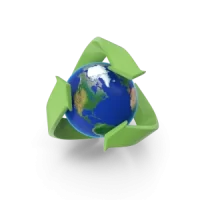
Individual Eco-Conscious Actions
Table of Contents
It is easy to think that our individual actions do not matter when it comes to something as big and complex as the Environment. But the truth is that every single choice we make can either help or harm the planet. And it is our job to teach our kids to make the right choices.
Let us start with something simple: recycling. It might seem like a small thing to separate your plastics from your paper, but the impact of that choice is significant. Every ton of recycled paper saves 17 trees, 7,000 gallons of water, and enough energy to power an average American home for six months. And that is just one example! When we teach our kids to recycle, we’re not just keeping trash out of landfills but also conserving resources and reducing pollution.
With plenty of other small choices, we can significantly impact the Environment. Turning off the lights when we leave a room, taking shorter showers, and using reusable bags instead of plastic – all of these actions add up to make a real difference.
However, it’s not just about our own individual choices. When we teach our children about the Environment, we also instill a sense of responsibility and stewardship. We’re teaching them to think beyond themselves and consider the impact of their actions on the world around them. And that’s a lesson that will serve them well throughout their lives.
Earth Week
Each year the month of April brings with it the celebration of Earth Week when individuals and organizations worldwide come together to celebrate and raise awareness about our most precious natural resource – the Earth. This year, Earth Day is to be widely observed on April 22nd. It provides the perfect opportunity for us to reflect on our lifestyles and how we can incorporate sustainable and earth-friendly practices into our homes.
Small Steps
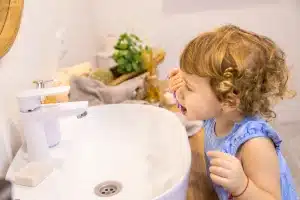
Teach Sustainability
As a father, we must teach our children about the Environment and what it means to live sustainably. Far too often, we don’t stop to think about our daily actions’ impact on the world around us or future generations.
One of the most crucial lessons we can instill in our children is the importance of living as sustainably as possible. This means prioritizing conserving our resources and creating as little waste as possible. We should strive for a zero-waste household by reducing, reusing, and recycling everything we can.
Unfortunately, we live in a world where environmental issues are more pressing than ever. Climate change, deforestation, and plastic waste are just a few of the biggest global environmental problems. As parents, it’s our job to raise our children to be part of the solution, not the problem.
Climate Change
Climate change is a hot-button issue, and it’s not going away anytime soon. The increased carbon emissions that have been released into the atmosphere have led to rising temperatures, melting ice caps, and rising sea levels. We’ve seen entire ecosystems disrupted and entire species pushed to the brink of extinction. It’s up to us to take action to reduce our carbon footprint and work towards a cleaner, more sustainable future.
Deforestation
Deforestation is another critical issue we must educate ourselves and our children on. Every minute, an area of forest the size of football fields is lost to deforestation. It’s not just the destruction of these ecosystems that’s alarming, but also their critical role in absorbing carbon dioxide, which helps to regulate our planet’s climate.
Plastic
Plastic waste is something that should concern everyone. It’s estimated that by 2050, more plastic will be in the ocean than fish. Single-use plastics, such as straws, bags, and bottles, are among the worst offenders. These items, which we use for just a few moments, have long-term, devastating effects on the planet and the wildlife that call it home.
How much plastic is in our oceans? Here are the alarming facts
Each choice makes a difference
o, what can we do as parents to make a difference? We start by teaching our children about these issues and how we can create and live sustainable lifestyles. We can show them how to reduce their carbon footprint, reuse items instead of throwing them away, and recycle everything possible. We can also show how to purchase products made from recycled materials, compost our food scraps and choose to support companies that prioritize sustainability.
As Mothers and Fathers, it’s our responsibility to raise our children to be environmentally responsible and make a difference. Together, we can help create a cleaner, more sustainable world for future generations.
The Importance to teach kids about the environment
To create a positive impact on the Environment, we must teach our children environmental awareness. Firstly, ecological education creates an awareness of the natural world and the need to protect it. Once children understand that our natural resources are finite and that we need to share them, they can develop a sense of appreciation and protectiveness toward the Earth that they will carry with them for life. It is the only way to make them more responsible for their actions and mindful of how human behavior can impact the Environment. Teaching kids and families about environmentally-friendly choices and how to reduce their carbon footprints can go a long way to reducing waste and pollution.
Secondly, by teaching children about the Environment, we can create environmental champions who will become advocates for the Earth. They can become agents of change by speaking out about environmental issues in their communities, schools, and even online. Parents can help nurture this spirit of advocacy by showing their kids how to take small steps towards sustainable living, such as recycling, reducing water and energy usage, and composting. These actions can create a ripple effect within their communities and inspire others to take action.
Environmental Awareness: Benefits of Sustainable Living for Families
Sustainable living practices have significant benefits for families and their children. Firstly, sustainable living can save money. Families can reduce their energy bills by turning off electronic devices when not in use, practicing energy-efficient lighting, and using energy-saving appliances. They can also save money on water bills by investing in low-flow shower heads and fixtures, gardening with native plants that require less water, and fixing leaky toilets and faucets. Additionally, buying local produce can save money on transportation costs, and families can save by cooking at home and avoiding waste.
Secondly, sustainable living practices can benefit children’s health. Sustainable living practices directly impact air and water quality, and reducing pollution can reduce respiratory problems and other health issues. Using organic and natural cleaning products and avoiding dangerous chemicals can also improve indoor air quality and reduce exposure to toxins. Gardening with organic methods, for instance, can teach kids about healthy eating, and harvesting fresh herbs and vegetables to cook with can lead to healthier eating habits.
Finally, sustainable living practices can provide a sense of satisfaction for families who embrace them. By taking an active role in reducing the family’s carbon footprint, parents and children can feel they are positively impacting the Environment. Learning about environmentally-friendly choices and the importance of caring for the Earth can also provide a sense of purpose and accomplishment.
Practical Tips and ways to teach kids
1. Reduce, Reuse, Recycle, Upcycle, Downcycle
These are all important concepts when it comes to sustainable living. By encouraging kids to understand and practice these concepts, we can help them develop eco-friendly habits that will benefit the Earth and our future.
A straightforward way to promote the idea of reducing waste is by encouraging kids to use reusable water bottles instead of disposable plastic bottles. Disposable plastic bottles are a significant source of pollution, as they often end up in landfills or in our oceans, where they can harm wildlife and ecosystems. Reusable water bottles are a practical, affordable alternative that significantly reduces waste.
In addition to using reusable water bottles, teaching children to be mindful of their belongings can also help reduce waste and promote reuse. By taking care of toys, clothing, and other possessions, children can learn to value their belongings and keep them in good condition for extended periods of time. This saves money and reduces the need to buy new items constantly, contributing to waste.
The carbon footprint of bottled water is staggering. According to a study by the Pacific Institute, producing a 500-milliliter bottle of water produces 82.8 grams of carbon dioxide. This is over 500 percent of what it takes to produce a glass of tap water, which produces only 0.15 grams of carbon dioxide on average.
The process of creating a bottled water product results in an excessive amount of carbon emissions. Firstly, the plastic used to make the bottles is produced from oil, which creates greenhouse gases, significantly contributing to climate change. Then, the energy used to extract, purify, bottle, and transport the water adds to the problem.
See the full fact sheet here Bottled Water and Energy
When it comes to upcycling, kids can learn to find creative ways to repurpose items that might otherwise be thrown away. For example, old t-shirts can be turned into reusable bags or glass jars can be used as storage containers. Upcycling not only reduces waste but also encourages creativity and resourcefulness.
Downcycling turns waste materials into lower-quality products, such as turning plastic bottles into park benches. While down-cycling is less ideal than upcycling, it is still a better option than simply throwing items away. Teaching children about down-cycling, they can understand how waste can still be helpful in certain situations.
Reducing, reusing, upcycling, down-cycling, and recycling are all important concepts that children should learn about to develop sustainable habits. By encouraging kids to use reusable water bottles, take care of their belongings, up-cycle items, and recycle materials, we can help them become environmentally conscious and responsible individuals. These habits can not only benefit the Earth but also inspire others to adopt sustainable living practices as well.
2. Encourage Walking and Biking:
Encouraging kids to walk or bike to school is a great way to promote exercise, reduce carbon emissions, and save transportation costs. Walking or biking can also reduce traffic congestion, making it easier for kids to get to school safely and efficiently.
Many children rely on their parents to drive them to school, even if it is just a short distance away. This leads to more cars on the road and increased carbon emissions. By encouraging kids to walk or bike to school, we can reduce the amount of carbon emitted into the atmosphere while promoting a healthy lifestyle.
In addition to reducing carbon emissions, walking or biking to school instead of driving can also save transportation costs. Cars require gas, maintenance, and insurance. Parents can save money and put those resources towards other family needs by avoiding using a car.
Encouraging your children to walk or bike to school also has many benefits for their health. Walking or biking is an excellent form of exercise and can help children stay active, which is essential for their physical and mental well-being. Kids who walk or bike to school are also more likely to arrive at school alert and ready to learn.
Environmental awareness can be encourages by Walking or biking to school. It also has many social benefits. Kids who walk or bike to school are more likely to have time to chat with friends and neighbors, creating a sense of community and belonging. Plus, they get to enjoy the fresh air and sunshine, which can boost their mood and overall health.
To encourage your children to walk or bike to school, you can start by talking to them about the benefits of exercise and reducing carbon emissions. You can also join or start a walking or biking group in your community, creating a social network for your children to feel a part of. Additionally, you can purchase bike locks and helmets to ensure your children can safely secure their bikes and protect themselves while riding.
Walking or biking to school is an easy and fun way to promote exercise, reduce carbon emissions, and save money. Encouraging your children to walk or bike to school is a great way to create healthy habits they can carry into adulthood. So, let’s help our children take the first step toward a healthier, happier future!
3. Use Sustainable Cleaning Products:
As more and more people become aware of the adverse effects that chemical-laden cleaning solutions can have on our health and the Environment, natural cleaning products are steadily gaining popularity. Natural cleaning products are made with safe, affordable, and easy-to-find ingredients, unlike their chemically-laden counterparts. Not only are they kinder to the Environment, but natural cleaning products are also non-toxic and gentle, making them perfect for use in homes with children and pets.
As parents, it’s essential to consider the impact our cleaning products have on our family’s health and the Environment. Many cleaning products contain harsh chemicals that can be harmful to both humans and wildlife. These chemicals can also have long-term effects on the Environment, such as contaminating water supplies and harming aquatic life. So, why not swap out these products for natural, non-toxic cleaning solutions?
One of the simplest natural cleaning solutions is vinegar. It is a natural disinfectant and can be used to clean everything from countertops to floors. Vinegar is also great at removing stains and grease. Mix equal parts of water and vinegar, and you have a powerful yet gentle cleaning solution. Additionally, you can add a few drops of essential oils, such as lemon or lavender, to add a fresh scent to your cleaning solution.
Another natural cleaning solution is baking soda. Baking soda is a mild abrasive and excellent at removing stains, including carpets and upholstery. You can also use baking soda to clean and deodorize refrigerators, dishwashers, and garbage disposals. Mix baking soda and water to form a paste, and use a sponge or cloth to apply to the surface to be cleaned. After a few minutes, wipe clean with a damp cloth.
Parents can also involve their children in making natural cleaning solutions. This can be a fun and educational activity that teaches children about the importance of using non-toxic products and the benefits of eco-friendly cleaning. Children can help mix the ingredients and add their favorite essential oils for a unique smell. They can also help with cleaning, making it a family affair and a great way to spend time together.
Natural cleaning products provide an environmentally-friendly, non-toxic, and affordable alternative to chemical-laden cleaning solutions. We, as parents, can involve our children in making natural cleaning solutions with ingredients such as vinegar or baking soda. Switching to natural cleaning products can help protect our health, the Environment, and future generations.
4. Conserve Energy:
We can start promoting environmental awareness by explaining the concept of energy and how it is generated. Our children can be taught that energy comes from natural resources such as coal, oil, and gas and that these resources are finite and can eventually run out. By conserving energy, they can learn that they are helping to protect the Environment and saving money on their energy bills at home.
One way to encourage energy conservation is to install solar panels in your home. Solar panels generate renewable energy, a clean and sustainable power source. Parents can teach kids about the benefits of renewable energy and how it can help reduce our reliance on non-renewable resources.
Another fun project parents can do with their children is shopping for LED bulbs for their homes. LED bulbs are energy-efficient, use less electricity, last longer, and produce less heat than traditional incandescent bulbs. They can also come in a variety of colors, so children may enjoy choosing the bulbs that best fit their personalities and preferences.
We encourage our children to turn off lights and electronics when leaving a room and unplug devices when fully charged. We need to look for energy-efficient appliances such as refrigerators, washing machines, and air conditioners for our homes. These small actions can quickly add up to significant energy savings over time.
By teaching children about the importance of conserving energy, we can help them develop a lifelong respect for the Environment and a sense of responsibility for the future. Encouraging them to turn off lights, unplug devices, and invest in energy-efficient appliances can also help reduce our carbon footprint and save money on our energy bills. With some education and creativity, conserving energy can be a fun and rewarding family activity.
Check here for your local and State Incentives for Renewables & Efficiency
5. Smart Shopping:
As parents, teaching our kids about the importance of buying locally-sourced, organic produce and avoiding products that contain synthetic colors and preservatives is crucial. The food we eat directly affects our health, the health of our planet, and the welfare of those who work in the food industry. Therefore, it is vital that we make responsible and thoughtful choices when it comes to our food choices.
Organic
One way to promote environmental awareness and to make responsible choices regarding food is by opting for locally-sourced, organic produce. Not only are these products usually fresher and tastier, but they are also grown in better ways for the Environment. Organic farming methods rely on sustainable practices that avoid using pesticides and synthetic fertilizers that can harm the Environment. Furthermore, buying from local farmers supports the community and the local economy.
Avoiding products that contain synthetic colors and preservatives is another way that we can make responsible food choices. These additives can be harmful to our health, especially when consumed in large quantities. Our kids need to understand that just because a product has a longer shelf life does not necessarily mean it is good for them.
Conserving energy and reducing waste are also crucial when shopping for food. Choosing products that have recyclable and recycled packaging is a simple way to reduce waste. Moreover, using reusable bags instead of plastic bags is an easy way to conserve energy and reduce plastic waste. Kids can be encouraged to use their creativity to make reusable bags out of old t-shirts or other materials.
Reuse
Finally, it is essential to teach our kids about reducing plastic packaging. Single-use plastic is a growing problem, and it is imperative that we teach our kids about the impact that it has on the Environment. Encouraging them to recycle, compost, and reuse plastic containers will help reduce this waste. We send our girls with a reusable lunch bag and eco-friendly beeswax wrappers for sandwiches. We also send a bamboo fork and spoon rather than plastic.
According to a recent European report, packaging alone represents 36% of municipal solid waste. This alarming statistic highlights the need for increased attention and efforts to address the issue of packaging waste.
Packaging waste refers to the discarded packaging materials used to protect and transport products. This includes items such as cardboard boxes, plastic bags, and Styrofoam containers.
The report indicates that despite the efforts made in recent years to reduce packaging waste, the problem continues to persist at an alarming rate. This is primarily due to the increasing number of packaged and sold products, leading to an ever-mounting pile of discarded packaging materials.
The negative impact of packaging waste on the Environment cannot be overstated. Discarded packaging materials contribute to the growing problem of litter and waste in our communities, polluting our streets, parks, and waterways. They also take up valuable space in landfills, which are rapidly becoming overburdened.
In addition, producing packaging materials requires significant natural resources, including water, energy, and raw materials. This results in substantial greenhouse gas emissions, contributing to climate change.
It is essential to take a multi-faceted approach to address the problem of packaging waste. This includes efforts to reduce the amount of packaging used in product production and promote the use of reusable and recyclable packaging materials.
As parents, we can teach our kids the importance of making responsible food choices. By choosing locally-sourced, organic produce, avoiding products that contain synthetic colors and preservatives, using recyclable and recycled packaging, and reducing plastic packaging. By setting a good example, we can teach our kids to be mindful and responsible consumers who care about the world around them. It is a lesson that will serve them well throughout their lives.
Final Thoughts
The Environment is a big topic, too big for one post. But let me tell you, we must teach our children about the importance of environmental awareness and responsibility.
We can put more money back into our pockets by reducing waste, conserving resources, and living more efficiently. And who doesn’t love that?
However, it’s not just about the money. Adopting sustainable living practices can also improve our health. By reducing our exposure to harmful chemicals, pollutants, and other toxins, we can improve both our own health and the health of our planet.
Also, let’s remember the satisfaction that comes with doing our part to protect the Environment. It feels good to know that we’re positively impacting our world, no matter how small that impact may seem.
So, what can we do to cultivate a sense of environmental responsibility in our families and future generations? For starters, we can teach our kids about conserving resources, recycling, and reducing waste. We can encourage them to be more mindful of their consumption habits and to choose eco-friendly products whenever possible.
We also need to lead by example. We cannot expect our kids to be environmentally responsible if we are not practicing what we preach. Let us all take a moment to evaluate our own environmental footprint and make changes where necessary.
It’s time to step up and make a difference. Each and every one of us has an environmental impact, whether we realize it or not. But by adopting sustainable living practices and teaching our children about environmental responsibility, we can create a better world for ourselves and future generations. So, let’s roll up our sleeves and get to work!
Resources – Environmental Awareness: The Solution Starts with Us
So, parents, please take the time to talk to your kids and promote environmental awareness. Teach them about the impact of their choices, no matter how small. Please encourage them to consider the world beyond their immediate needs and desires. And let’s work together to create a generation of responsible, environmentally-conscious citizens who understand the importance of caring for our planet. Thanks for reading.
Get your Earth Day 2023 Official toolkit here
Learn More about important Environmental Issues
and how you can help
Deforestation
https://www.globalforestwatch.org/
https://ourworldindata.org/deforestation
How to help
Ecosia – the search engine that plants trees
The Ocean
The Ocean Cleanup Project
https://theoceancleanup.com/
Oceanic Society – Ocean Cleanup 2022
https://www.oceanicsociety.org/program-updates/global-ocean-cleanup-collects-2-3-tons-of-waste-in-8-locations-on-single-day/
The Ocean and Rivers – Trash Cleanup #TeamSeas
https://teamseas.org
Join a beach cleanup or Start a beach cleanup
Ocean Cleanup Volunteers
Recycle
Reduce,Reuse,Recycle Kids Environment
https://kids.niehs.nih.gov/topics/reduce
Plastic
Get Involved
https://www.plasticpollutioncoalition.org/
Coca-Cola, Pepsi and Nestlé named top plastic polluters for third year in a row
https://www.theguardian.com/environment/2020/dec/07/coca-cola-pepsi-and-nestle-named-top-plastic-polluters-for-third-year-in-a-row
Understand how companies often greenwash the ecology friendliness of their plastics
https://surfrider.eu/wp-content/uploads/2020/07/fbi_recycling_en.pdf
Videos
Cleaning the Great Pacific Garbage Patch
More Plastic Than Fish in the Oceans by 2050?
See our other articles in Environment and Conservation.
Earth Day and Kids
Earth Day and Kids |More4kids.info
10 Best Recycling Websites for Kids | More4kids.info
Green Living Tips for your Family | More4kids.info
Tips For Helping Kids Grow Up Living Green | More4kids.info
Simple Ways to Save the World | More4kids.info
Arbor Day Foundation TikTok Challenge #TeamTrees: Social media and the rise of Viral Challenges | More4kids.info


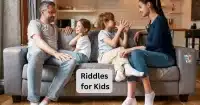

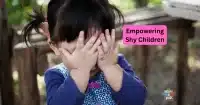


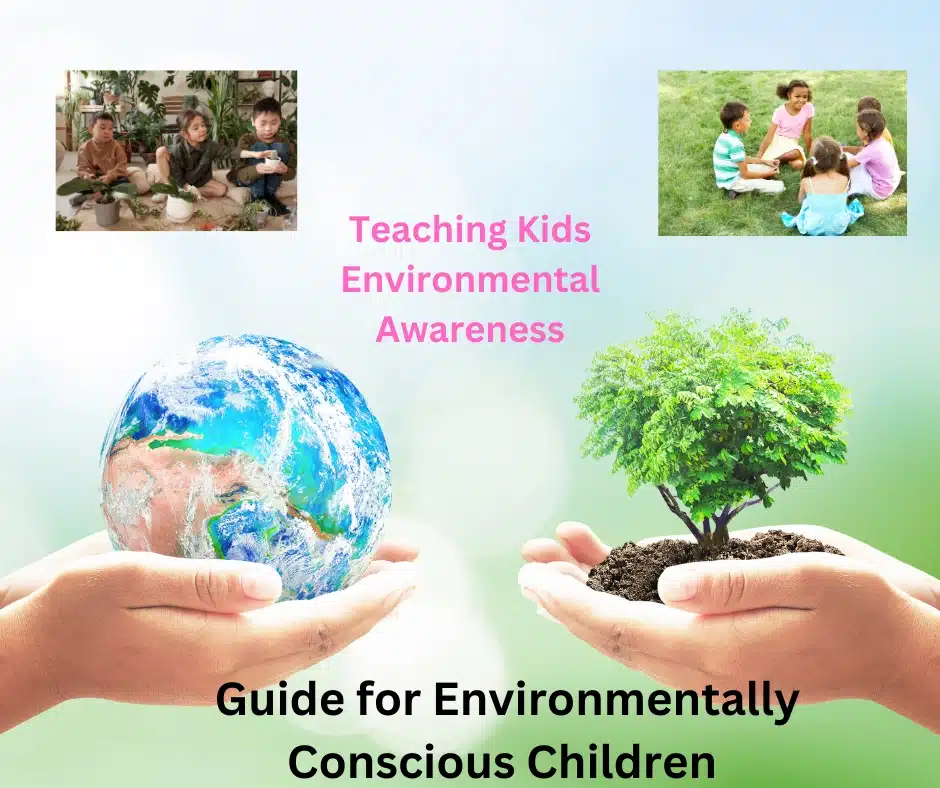
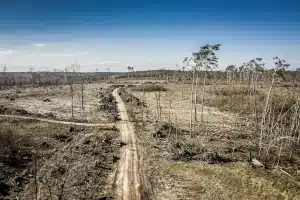
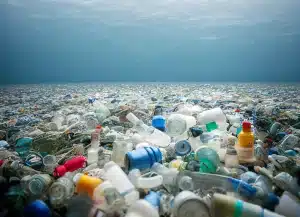
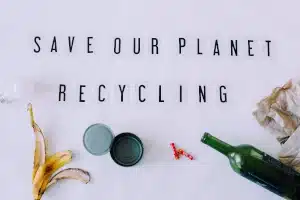
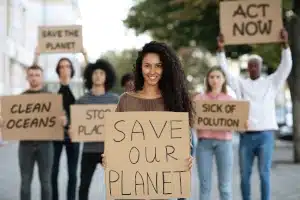
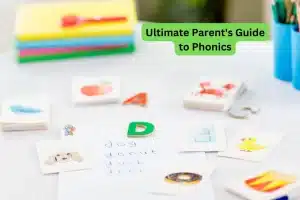



Add Comment